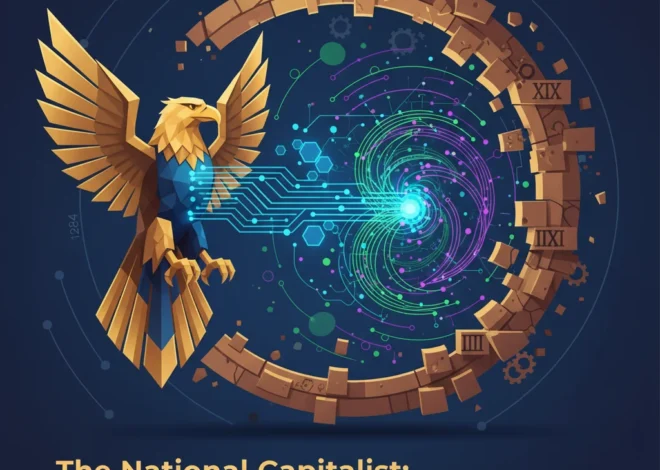
The Swift Standard: Deconstructing a 4 Million-Unit Album Launch as a Masterclass in Modern Economics
The End of an Era, The Beginning of an Empire
In a digital age where the concept of a “bestselling album” feels like a relic from a bygone era, a seismic event just reset the entire landscape. Taylor Swift’s latest album, ‘The Life of a Showgirl,’ has achieved the seemingly impossible, posting sales of more than 4 million units in its first week alone. This isn’t just a win for a recording artist; it’s a thunderous statement on brand loyalty, economic strategy, and the creation of a self-sustaining financial ecosystem that defies modern market trends.
While the broader music industry grapples with the economics of streaming and dwindling physical sales, the Swift phenomenon operates in a parallel universe, governed by its own set of rules. For investors, finance professionals, and business leaders, dismissing this as mere pop culture is a critical error. The launch of ‘The Life of a Showgirl’ is not a music story; it’s one of the most compelling business case studies of our time, offering profound lessons in finance, direct-to-consumer strategy, and long-term value investing.
Putting the Numbers in Perspective: A Statistical Anomaly
To truly grasp the magnitude of this achievement, we must contextualize it. The era of multi-million unit first-week sales effectively ended with the rise of digital streaming services in the late 2000s. Today, an album is considered a blockbuster if it moves 500,000 album-equivalent units. Swift’s latest release didn’t just beat the average; it created an entirely new benchmark that is unprecedented in the current era of declining music sales.
Let’s visualize this disparity. The table below compares the first-week performance of ‘The Life of a Showgirl’ with typical industry metrics for a major artist release in the 2020s.
| Performance Metric | ‘The Life of a Showgirl’ (Taylor Swift) | Typical Major 2024 Album Release |
|---|---|---|
| First-Week Album-Equivalent Units | Over 4,000,000 (source) | 250,000 – 500,000 |
| Pure Sales (Physical + Digital) | Estimated 2.5M+ | 50,000 – 100,000 |
| Vinyl Sales (First Week) | Estimated 1M+ | 25,000 – 50,000 |
| Merchandise Bundle Impact | Extremely High (Integrated Strategy) | Moderate (Ancillary Revenue) |
This data reveals a core strategic insight: Swift is not competing in the current music industry; she has built her own. The focus on high-margin physical products like vinyl—often with multiple collectible variants—is a deliberate financial strategy. It transforms a low-margin stream into a high-value physical asset, turning passive listeners into active investors in her brand. This is a crucial lesson in product strategy and understanding customer lifetime value.
The “Swiftonomics” Flywheel: A Diversified Financial Powerhouse
The album is merely the catalyst, the product launch that activates a much larger, interconnected economic machine. Understanding this “flywheel” is essential for appreciating the full scope of her business acumen. The model is a masterclass in diversification and synergistic revenue streams, insulating her enterprise from the volatility of any single market segment.
Consider the “Taylor Swift Inc.” portfolio:
- Recorded Music: The core intellectual property. Re-recording her back catalog was not just an artistic choice but a brilliant financial move to reclaim and fully monetize her most valuable assets.
- Touring: A significant driver of the U.S. economy. The Eras Tour is not just a series of concerts; it’s a traveling economic stimulus package, boosting local hospitality, transport, and retail sectors in every city it visits. It acts as the primary marketing vehicle for all other ventures.
- Merchandise: A high-margin, direct-to-consumer business that leverages financial technology for seamless global e-commerce. It’s a case study in creating scarcity and demand for physical goods in a digital world.
- Film and Media: The Eras Tour concert film bypassed traditional studio distribution, demonstrating a sophisticated understanding of vertical integration and risk management. This move gave her a larger share of box office revenue and full control over the release.
Each component amplifies the others. The album launch drives tour ticket demand. The tour serves as a massive pop-up shop for merchandise. The film extends the tour’s life and reaches a global audience unable to attend in person. This is not a collection of separate businesses; it’s a tightly integrated ecosystem where the whole is far greater than the sum of its parts. It mirrors the platform strategies of tech giants, but with a human-centric, emotional core.
Mastering the Financial Stack: Lessons in Direct-to-Consumer Fintech
At the heart of this empire is a sophisticated command of the modern financial stack. Swift’s operation has systematically disintermediated traditional gatekeepers—record labels, distributors, and ticketing companies—by building a direct line to her consumers. This is where the lessons for the fintech and banking sectors become crystal clear.
Her website is not just a fan portal; it’s a powerful e-commerce engine capable of handling millions of transactions in minutes. The use of staggered releases, exclusive “drops,” and member-only access codes are not just marketing gimmicks; they are sophisticated load-balancing and demand-management techniques. The backend infrastructure required for this—from payment processing to fraud detection to international currency conversion—is a testament to the power of modern financial technology. She has effectively become her own merchant bank, capturing the maximum possible value from every single transaction.
This direct model provides invaluable data, allowing her team to understand consumer behavior, predict demand, and tailor offerings with a precision that is the envy of any legacy consumer brand. This is the new face of finance: embedded, seamless, and community-centric.
The Artist as an Asset Class: A New Frontier for Investing?
From an investing perspective, the Taylor Swift brand can be analyzed much like a blue-chip stock: consistent growth, a wide defensive moat, and a long-term strategic vision. Her every move has ripple effects across the stock market. News of her tours can impact stocks like Live Nation (Ticketmaster) and regional hotel chains. Her choice of streaming partner can influence subscriber numbers. She is, in effect, a market-moving entity.
This has led to a fascinating, if nascent, conversation in finance: the potential for artists as a formal asset class. While we are not yet trading shares of “Taylor Swift Inc.,” the principles are there. Her career is a lesson in long-term value investing. She has consistently reinvested in her core asset—the fan relationship—knowing it will pay dividends for decades. She diversifies her portfolio (music, film, tours) to mitigate risk. She makes strategic acquisitions (re-recording her masters) to consolidate control over her assets.
This leads to a forward-looking question for the worlds of finance and blockchain. What if an artist’s future earnings could be tokenized? What if fans could invest directly in an album’s success, receiving a share of the royalties through a smart contract on a blockchain? This would represent the ultimate disintermediation, creating a direct financial alignment between creator and consumer. While speculative, the Swift model proves the demand for such a direct connection is enormous. The technology to facilitate it is the next logical step in the evolution of the creator economy.
The Final Word: More Than Music
The historic launch of ‘The Life of a Showgirl’ is a powerful reminder that the principles of sound economics and strategic finance are universal. Taylor Swift has built more than a fanbase; she has cultivated a dedicated market of consumers who are emotionally and financially invested in her success. She has leveraged technology to build a direct, high-margin relationship with that market, and she has diversified her revenue streams to create a resilient, anti-fragile business empire.
For anyone in business, from a startup founder to a Fortune 500 CEO, the lessons are clear. Understand your customer, own your relationship with them, diversify your offerings, and never stop investing in your core brand. In the complex modern economy, the Swift Standard is the new gold standard.


